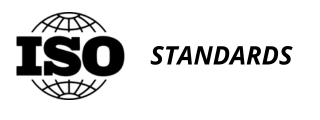In the ever-evolving landscape of quality management, Section 8.2 of ISO 9001:2015 emerges as a critical touchstone, delineating the paramount responsibility organizations hold in adeptly managing product and service requirements. Central to this task is the cornerstone of effective communication—a facet that, if neglected, can significantly detract from an organization’s success. ISO 9001:2015 mandates a structured approach to this endeavor, requiring the development and implementation of communication processes tailored to engage customers comprehensively. This article navigates the imperative of fostering such communication processes, exploring their role in enhancing customer satisfaction and organizational performance.
Establishing Effective Communication Channels
The essence of ISO 9001:2015’s stance on communication revolves around ensuring that organizations maintain an open, responsive, and transparent dialogue with customers. This encompasses the provision of accurate, timely information on products and services, including data on pricing, service agreements, functionalities, and limitations. By prioritizing such informative exchanges, organizations not only bolster customer trust but also lay a foundation for enduring relationships.
Streamlining Inquiry and Order Processes
A pivotal aspect of customer communication under ISO 9001:2015 is the management of inquiries, contracts, and orders. Effective communication processes must accommodate the dynamic nature of customer interactions, where queries may arise or additional information may be necessitated. Establishing clear protocols for such exchanges ensures that both parties enjoy a smooth, unambiguous understanding of product and service specifications, thereby minimizing the risk of misunderstandings and enhancing operational efficiency.
Soliciting and Utilizing Customer Feedback
At the heart of continuous improvement lies the invaluable resource of customer feedback. ISO 9001:2015 underscores the significance of actively seeking and addressing customer opinions, including complaints or grievances. Far from being a mere procedural formality, this engagement is crucial for identifying areas of improvement, innovating product offerings, and ultimately, achieving customer delight. Organizations are thus encouraged to devise facile, accessible means for customers to share their experiences, alongside robust mechanisms for investigating and acting upon such feedback.
Safeguarding Customer Property
The management of customer property, be it intellectual, physical, or software-based, is another critical component addressed by ISO 9001:2015. Organizations are required to implement precise communication protocols for handling and controlling customer assets, ensuring their integrity and confidentiality are uncompromised. This not only reinforces customer trust but also mitigates potential risks associated with property mismanagement.
Preparing for Contingency Actions
In scenarios warranting contingency actions—particularly in high-risk operations—ISO 9001:2015 stresses the importance of establishing preemptive communication strategies. By addressing potential what-if scenarios through clear, concise communication plans, organizations can better navigate unforeseen challenges, minimizing disruptions and safeguarding both stakeholder interests and operational continuity.
Documentation and Continuous Improvement
Although ISO 9001:2015 does not mandate the documentation of communication processes related to products and services, embracing a documented approach is advisable. Such records not only serve as a reference for existing practices but also facilitate the identification of improvement opportunities. By continuously refining communication processes, organizations can adapt more adeptly to customer needs and market dynamics, securing a competitive edge.
Conclusion
In conclusion, the successful management of customer requirements hinges on the establishment of effective communication processes, as delineated by ISO 9001:2015. By adopting a systematic approach to information exchange, inquiry handling, feedback processing, and the safeguarding of customer property, organizations can significantly enhance their quality management practices. Ultimately, the rigorous application of these principles paves the way for sustained customer satisfaction and organizational excellence, reaffirming the indelible link between effective communication and quality management success.




